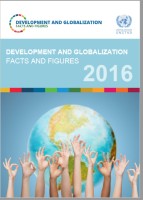
Since the 1990's, 1 billion people have been lifted out of extreme poverty and the proportion of undernourished people in the developing regions has fallen by almost half.
During the same period, the global under-five mortality rate has declined by more than half, dropping from 90 to 43 deaths per 1000 live births. Millions of young girls are in school now as gender disparity in primary, secondary and tertiary education has been eliminated in developing countries as a whole1.
Despite the achievements of the Millennium Development Goals (MDGs), there remains more work to be done. We have seen how war, famine or natural disasters can undermine or undo years of progress almost overnight. For this reason, the Sustainable Development Goals (SDGs) renew our resolve to combat global poverty and ensure inclusive prosperity, but also strengthen our determination to tackle climate change and environmental degradation.
The 2030 Agenda for Sustainable Development sets out a very ambitious programme of work. In September 2015 the 17 goals and 169 targets of the SDGs were agreed. The challenge is now to measure these goals and targets with the most appropriate and comprehensive indicators available.
In March 2016, 230 indicators were adopted by the United Nations Statistical Commission and now await ratification. As these indicators have not yet been ratified, this first statistical report on the SDGs provides a tentative situation review, for the goals and targets that fall under UNCTAD's mandate. Although tentative, the report nevertheless puts down an early benchmark, providing a very useful early indicator of the gaps, which must be closed in order to achieve the SDGs.
The data demands arising from the SDGs are huge and cannot be realistically met by official data alone. Consequently a variety of data sources have been utilized to compile this report, leading to a key message from the report - there are insufficient data available at the moment to provide data to populate all 230 indicators. Thus, in order to provide benchmarks and measure subsequent progress, what I describe as 'complementary evidence' must be harnessed and utilized.
The report also clearly illustrates the links and interconnectedness of what at first reading may seem to be disparate or unconnected goals and targets.